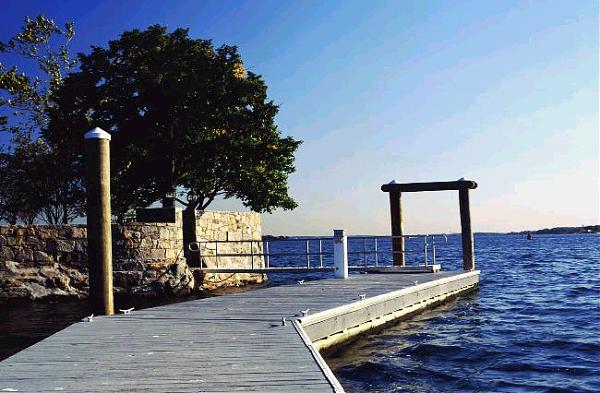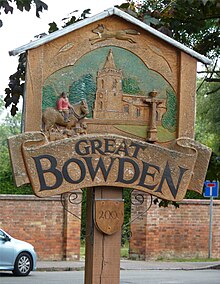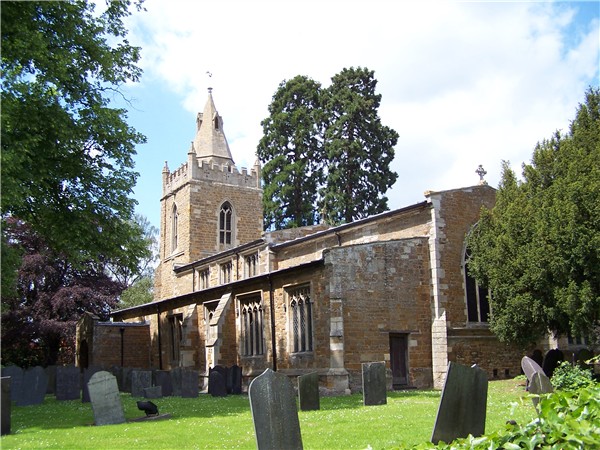Sure I have discovered quite a bit of family history and unearthed some amazing documents, but there
have been many bumps along the way, not just with those gaelic folks either. The basic approach to genealogy is to work backwards in time, but it ends up being more like a jigsaw puzzle than a straight path. The discovery of each new detail has the potential to lead you to your pot of ancestral gold, or down a long, arduous dead end or even to the realization that last few tree branches you painstakenly developed are blarney because you have once again latched onto someone else's relative! Not that I've done that - well, at least I haven't crashed anyone's family dinner, yet.
So why are those Church records so important? Unfortunately, the vast majority of Ireland's Census records from the 19th century were either destroyed by fire or bureaucratic incompetence. Yup, on the bright side, this means me and the elves are completely off the hook!
There are zero Irish Census records from 1860 to 1900. They were destroyed intentionally by the government who apparently did not think they were necessary.
Ok, but we still have the first half of the century, right? Nah, that's pretty much gone too. Back in 1922, a fire in the Public Record Office of Ireland destroyed most of the census records from the years 1821 to 1851, as well as many other documents and records. That only leaves 1801 and 1811 intact.
Over 80 years of records wiped out, forget the bumps, that's a massive crater! And it just happens to be the era when so many Irish came to America and thus, would have been a key link to their ancestry.
Currently, I am trying to trace the Irish ancestry of my great grandmother, Winifred, who immigrated about 1890. I do know the names of her parents, Thomas & Mary Cooney and I found the record of their 1867 marriage in Limerick. That record tells me Mary was born in 1841 and her father was John Ryan. Great, now all I have to do is find John Ryan, father of Mary, who lived in Ireland in 1841. How hard could that be?
Lets just say I am dreaming about Census forms! Those vanishing records would have so much info -dates & places of birth, relationships, residences, occupations, maybe even parents place of birth- and, by process of elimination, I would have a good chance of finding the right family. Sometimes you get lucky and find a married couple actually living with or next to their in-laws on the census. But no such luck for me as the first available census is 30 years before Mary was born. If John Ryan was alive, he would most likely be a wee lad and the census would not contain any details to identify him as Mary's father.
I am not giving up, though, and so I turn next to birth, baptism, marriage and death records, which each contain limited information, but combined could lead to the missing pieces of our puzzle. Now, I swear there must a gaggle of leprechauns ROFL, because Ireland didn't officially record any of that rubbish until the year 1864, when the Irish civil registration of births, marriage and deaths began.
 Prior to this, records were only kept by individual churches, but parish records did not follow a uniform practice regarding what information was captured, how the records were stored or maintained, thus there are holes and problems with the limited records that do exist.
Prior to this, records were only kept by individual churches, but parish records did not follow a uniform practice regarding what information was captured, how the records were stored or maintained, thus there are holes and problems with the limited records that do exist.
So the Catholic Church should have records of the Ryan family right? Well, maybe. Although Ireland is predominantly catholic, there was discrimination against the Catholics that led to a law, in effect from 1703 to 1829, prohibiting Catholic churches from keeping any registers which means what records they do have didn't begin until 1830 or later. Also, records of some Catholics may be found in the Church of Ireland for a number of reasons including the requirement that any marriage between a Catholic and Protestant be held in the Church of Ireland.
Just to keep things interesting, for those sparse records that turn up, deciphering locations within Ireland is challenging. Ireland has enough layers of ever changing jurisdictional divisions to make your head spin. And, of course, if those lads liked a name, they used it for multiple locations.
An address is typically written as Townland, Barony, County, but may contain the parish in addition or instead of one of the other areas. County Kilkenny, for example, is 800 sq. miles, smaller than the state of Rhode Island, yet, in 1802 it had 9 Baronies and 800 townlands. Today there are 12 Baronies, 137 parishes and some 1600 Townlands.
 After all of this, I was about to throw in the towel, when I found the baptism of Mary Ryan in 1841. All the pieces fit so she could be Winifred (Cooney) Cox's mother - my great great grandmother. Now these records have been referenced and indexed by people smarter than me, but every once I think the elves get involved and run amok with the details so I like to double check. This record indicates it was in Ballinakill Co. Galway, but the first page of the record book states, "Registry book of the baptisms for the United parishes of Ballinakill, Ballyroan, Abyleix & Knockgordegur..." I think. As you probably guessed, there are or were multiple parishes named Ballynakill in Ireland in multiple counties- Galway, Clare, Kilkenny, Laois... so I guess there's more work to do.
After all of this, I was about to throw in the towel, when I found the baptism of Mary Ryan in 1841. All the pieces fit so she could be Winifred (Cooney) Cox's mother - my great great grandmother. Now these records have been referenced and indexed by people smarter than me, but every once I think the elves get involved and run amok with the details so I like to double check. This record indicates it was in Ballinakill Co. Galway, but the first page of the record book states, "Registry book of the baptisms for the United parishes of Ballinakill, Ballyroan, Abyleix & Knockgordegur..." I think. As you probably guessed, there are or were multiple parishes named Ballynakill in Ireland in multiple counties- Galway, Clare, Kilkenny, Laois... so I guess there's more work to do.
Now, if I hadn't found this record, I probably would have gone off to do something trivial like make dinner, but those sneaky elves sent this baptism my way just to keep me hooked.
Stay tuned for more information about Winifred Cooney Cox in the next blog post.
Locations within Ireland
Ireland is divided into four provinces -the original kingdoms that predate the 12th century Norman invasion- which are culturally and historically significant, but have no governmental authority. Our ancestors are mostly from the provinces of Munster and Connaught which is in the Western part of the country and what is today, The Republic of Ireland.
The principal governing layer in Ireland is the 32 Counties. In most cases these are written as Co. Clare or Kilkenny Co., but not always and since there are cities and other locales with the same names as the counties it can be difficult to discern which is referenced.
The counties were divided into baronies then into civil parishes and finally townlands. Baronies no longer have much purpose, but are still used for land registration and addresses. Some baronies cross county lines. Civil Parishes are not the sames as church parishes although in some cases they were aligned with the church of Ireland but not necessarily Catholic Church. The 19th century saw countless changes, consolidation and restructuring of baronies and townlands throughout Ireland. There are also Poor union law districts which are used for things such as probate records.
Currently, I am trying to trace the Irish ancestry of my great grandmother, Winifred, who immigrated about 1890. I do know the names of her parents, Thomas & Mary Cooney and I found the record of their 1867 marriage in Limerick. That record tells me Mary was born in 1841 and her father was John Ryan. Great, now all I have to do is find John Ryan, father of Mary, who lived in Ireland in 1841. How hard could that be?
Lets just say I am dreaming about Census forms! Those vanishing records would have so much info -dates & places of birth, relationships, residences, occupations, maybe even parents place of birth- and, by process of elimination, I would have a good chance of finding the right family. Sometimes you get lucky and find a married couple actually living with or next to their in-laws on the census. But no such luck for me as the first available census is 30 years before Mary was born. If John Ryan was alive, he would most likely be a wee lad and the census would not contain any details to identify him as Mary's father.
I am not giving up, though, and so I turn next to birth, baptism, marriage and death records, which each contain limited information, but combined could lead to the missing pieces of our puzzle. Now, I swear there must a gaggle of leprechauns ROFL, because Ireland didn't officially record any of that rubbish until the year 1864, when the Irish civil registration of births, marriage and deaths began.
 Prior to this, records were only kept by individual churches, but parish records did not follow a uniform practice regarding what information was captured, how the records were stored or maintained, thus there are holes and problems with the limited records that do exist.
Prior to this, records were only kept by individual churches, but parish records did not follow a uniform practice regarding what information was captured, how the records were stored or maintained, thus there are holes and problems with the limited records that do exist. So the Catholic Church should have records of the Ryan family right? Well, maybe. Although Ireland is predominantly catholic, there was discrimination against the Catholics that led to a law, in effect from 1703 to 1829, prohibiting Catholic churches from keeping any registers which means what records they do have didn't begin until 1830 or later. Also, records of some Catholics may be found in the Church of Ireland for a number of reasons including the requirement that any marriage between a Catholic and Protestant be held in the Church of Ireland.
An address is typically written as Townland, Barony, County, but may contain the parish in addition or instead of one of the other areas. County Kilkenny, for example, is 800 sq. miles, smaller than the state of Rhode Island, yet, in 1802 it had 9 Baronies and 800 townlands. Today there are 12 Baronies, 137 parishes and some 1600 Townlands.
 After all of this, I was about to throw in the towel, when I found the baptism of Mary Ryan in 1841. All the pieces fit so she could be Winifred (Cooney) Cox's mother - my great great grandmother. Now these records have been referenced and indexed by people smarter than me, but every once I think the elves get involved and run amok with the details so I like to double check. This record indicates it was in Ballinakill Co. Galway, but the first page of the record book states, "Registry book of the baptisms for the United parishes of Ballinakill, Ballyroan, Abyleix & Knockgordegur..." I think. As you probably guessed, there are or were multiple parishes named Ballynakill in Ireland in multiple counties- Galway, Clare, Kilkenny, Laois... so I guess there's more work to do.
After all of this, I was about to throw in the towel, when I found the baptism of Mary Ryan in 1841. All the pieces fit so she could be Winifred (Cooney) Cox's mother - my great great grandmother. Now these records have been referenced and indexed by people smarter than me, but every once I think the elves get involved and run amok with the details so I like to double check. This record indicates it was in Ballinakill Co. Galway, but the first page of the record book states, "Registry book of the baptisms for the United parishes of Ballinakill, Ballyroan, Abyleix & Knockgordegur..." I think. As you probably guessed, there are or were multiple parishes named Ballynakill in Ireland in multiple counties- Galway, Clare, Kilkenny, Laois... so I guess there's more work to do. Now, if I hadn't found this record, I probably would have gone off to do something trivial like make dinner, but those sneaky elves sent this baptism my way just to keep me hooked.
Stay tuned for more information about Winifred Cooney Cox in the next blog post.
Locations within Ireland
Ireland is divided into four provinces -the original kingdoms that predate the 12th century Norman invasion- which are culturally and historically significant, but have no governmental authority. Our ancestors are mostly from the provinces of Munster and Connaught which is in the Western part of the country and what is today, The Republic of Ireland.
The principal governing layer in Ireland is the 32 Counties. In most cases these are written as Co. Clare or Kilkenny Co., but not always and since there are cities and other locales with the same names as the counties it can be difficult to discern which is referenced.
The counties were divided into baronies then into civil parishes and finally townlands. Baronies no longer have much purpose, but are still used for land registration and addresses. Some baronies cross county lines. Civil Parishes are not the sames as church parishes although in some cases they were aligned with the church of Ireland but not necessarily Catholic Church. The 19th century saw countless changes, consolidation and restructuring of baronies and townlands throughout Ireland. There are also Poor union law districts which are used for things such as probate records.

























